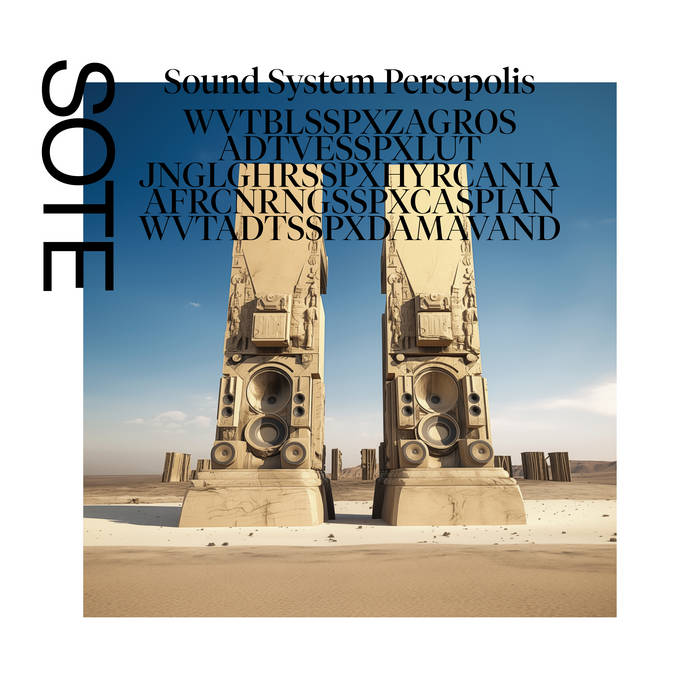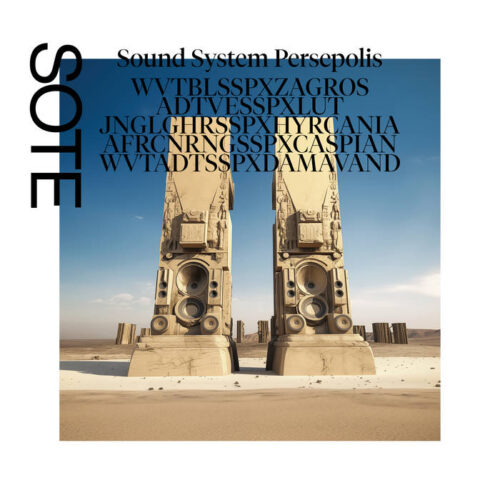Sound System Persepolis, the recent release by the 52-year-old Iranian electronic musician Sote, plays with boundaries and limits: is this rave music or electronic high art? Melodic or amelodic? A new definition of digital-age “mezzo-music,” somewhere between more elite electronic and club music, or a unique creation of its own?
With its cover art depicting the famous Gate of All Nations in Persepolis transformed into a set of large loudspeakers, the album stands out compared to other works by the composer. In contrast to some of his earlier works, there are no concrete references to his musical roots –except for an almost 6/8 Iranian dance rhythmic figure that emerges out of the shadows in the third track. Also, unlike records such as Majestic Noises From Beautiful Rotten Iran (2022), the tracks follow a less narrative character, presenting impressions rather than expressions, as echoed in the titles, which are combinations of computer codes and geographical names referring to different regions of Iran: the Zagros Mountains, Caspian Sea, Lut Desert, Hyrcanian Forest, and Damavand Peak, all gathered under the umbrella of the ancient Persepolis royal palace.
Sound System Persepolis is heavily dependent on ecstatic riff-like rhythms, merging into one another. While riffs were also used in other works by Sote, the rhythmic patterns are unconventional, yet not difficult to grasp bodily. The endless repetition of these patterns not only hypnotises or moves the body but also provides a stable foreground for ever-evolving melodies in the background before moving to the next rhythmic pattern. The power dynamics between melody and rhythm are thus in contrast to the conventional manner. Melody follows the rhythm and fits itself into it, instead of the more conventional dynamic where melody plays the main role. Coupled with the code-like song titles, the heavily punctuated rhythms filled with electronic staccatos, create hard-edge impressions that echo the computer-based character of the music.
While the mental and bodily experience of listening to this punctuated, thought-through, and pleasantly rough record is unexpected and original, what remains unclear is the relation between the places and the music. In reality, Caspian is a sea, Damavand is a mountain, and Lut is a large desert, but how are these differences echoed in the music? If, according to the cover art, the music is an imagination of these geographical characters turned into speakers expressing their existence in computer music, what makes an extremely hot desert’s monologue any different from that of a snowy peak?



